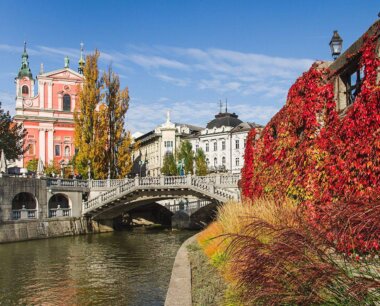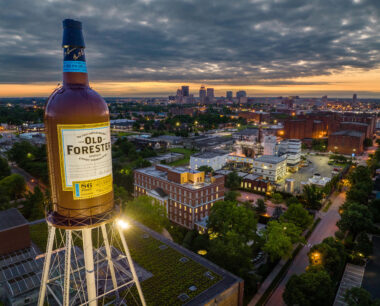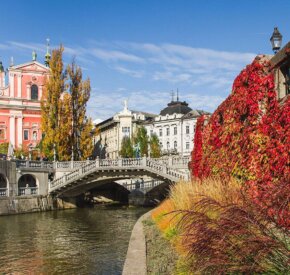
Is this the USA’s most underrated state? 5 reasons to travel to Nebraska
Too many travellers overlook Nebraska’s outdoor adventures, rich Native heritage and scenic byways – here’s why you should give the state a chance…
Stretching out in the middle of the United States and covered with wind-swept prairies, sandhills and miles of waterways, Nebraska showcases the natural beauty of the country’s Midwest region. Its “Cornhusker State” nickname is a nod to the state’s agricultural heritage – but there’s more to Nebraska than cornfields.
A road-trip through the state offers the chance to take in distinctive landscapes, experience Indigenous cultures and enjoy the legendary Midwestern friendliness. Here are five exciting reasons to visit:
1. For an epic road trip

Swathes of American history and striking panoramas are revealed on road trips through Nebraska and there are nine scenic byways that crisscross the state.
Among the most popular is the 365 Gold Rush Scenic Byway, which traces the trail of 19th-century gold rush pioneers and travels through the wildlands of Chadron State Park. You’ll also route through Dobby’s Frontier Town, a preserved 19th-century Western town, and pass Carhenge, a replica of Stonehenge created with 39 vintage American cars.
The Lincoln Highway National Scenic and Historic Byway, meanwhile, offers a deep-dive into the past. You’ll trace the path of cowboys and Pony Express (a historic mail service) riders on a cross-state journey from Blair in the far east to Kimball in the far west. There’s also the Lewis and Clark Scenic Byway, which follows the wooded bluffs and Indigenous paths traced by the famous explorers, who traversed the newly acquired Western portion of the USA in the early 1800s.
2. To view the state’s majestic sandhills

Stretching 426km across western Nebraska, the sweeping vistas of grass-stabilised sand dunes define the landscape. With some dunes rising over 121m, the Nebraska Sandhills are a striking sight and road-trippers can enjoy miles and miles of the dunes without seeing another soul, as they wind through one of the state’s most sparsely populated areas.
From mid-February through March, one million Sandhill Cranes migrate to the area’s Platte River Valley for one of the Earth’s most impressive bird migrations.
3. To discover American artefacts and history at the Pioneer Village

The story of the United States and how it developed is told through the interactive Pioneer Village in Minden, in the state’s south. Spreading over 20 acres and featuring 28 historic buildings, the village is one of the largest and most complex sites of its kind in the Midwest.
Take a step into the past with a wander around the frontier fort, general store and Pony Express station, and pore over more than 50,000 artefacts from the 18th and early 19th century. The collection’s highlight is a ceramic sugar bowl belonging to 16th president Abraham Lincoln.
4. You can find adventures on the water

Although technically a landlocked state, Nebraska is covered with rivers, lakes and waterfalls. Opportunities for traditional water-based activities are endless, from kayaking in the northwestern Fort Robinson State Park to paddleboarding on Omaha’s Standing Bear Lake.
But locals also enjoy floating down rivers using a unique method called ‘tanking’. Given Nebraska’s deep-rooted agricultural heritage, livestock water tanks – round metal containers big enough to hold four to six adults – are abundant. Tanking companies toss the tank into the river and guests climb in – then, the tank floats slowly down the river, allowing participants to soak in the forests, birds and plants. Hopping out and splashing in the water is also an option.
Tanking trips typically last two to six hours and are a great way to drink in Nebraska’s natural scenery – top operators include Tank N Tube River Rides, which run on the Elkhorn River, near Omaha.
5. To witness one of the oldest powwows in North America

The Winnebago Tribe of Nebraska has hosted an annual homecoming celebration powwow since 1866. The tribe was forced from their home in Minnesota in 1863 and they travelled to the Dakota territory before moving to the Omaha Reservation in Nebraska. The Winnebago Reservation was eventually established through treaties in 1865 and then 1874.
Every year in late July, the Winnebago organises a Homecoming Celebration Powwow. The four-day celebration features dancing and drumming, with tribal members wearing traditional regalia with intricate beading, feathers and embroidery. The Grand Entry, when hundreds of dancers march in and form a circle, is a major highlight.
Traditional crafts such as dream catchers, jewellery and embroidered clothing are on sale, along with foods like fry bread, grilled corn and turkey legs.
(Image: Mark Francis/Flickr/CC license)




















